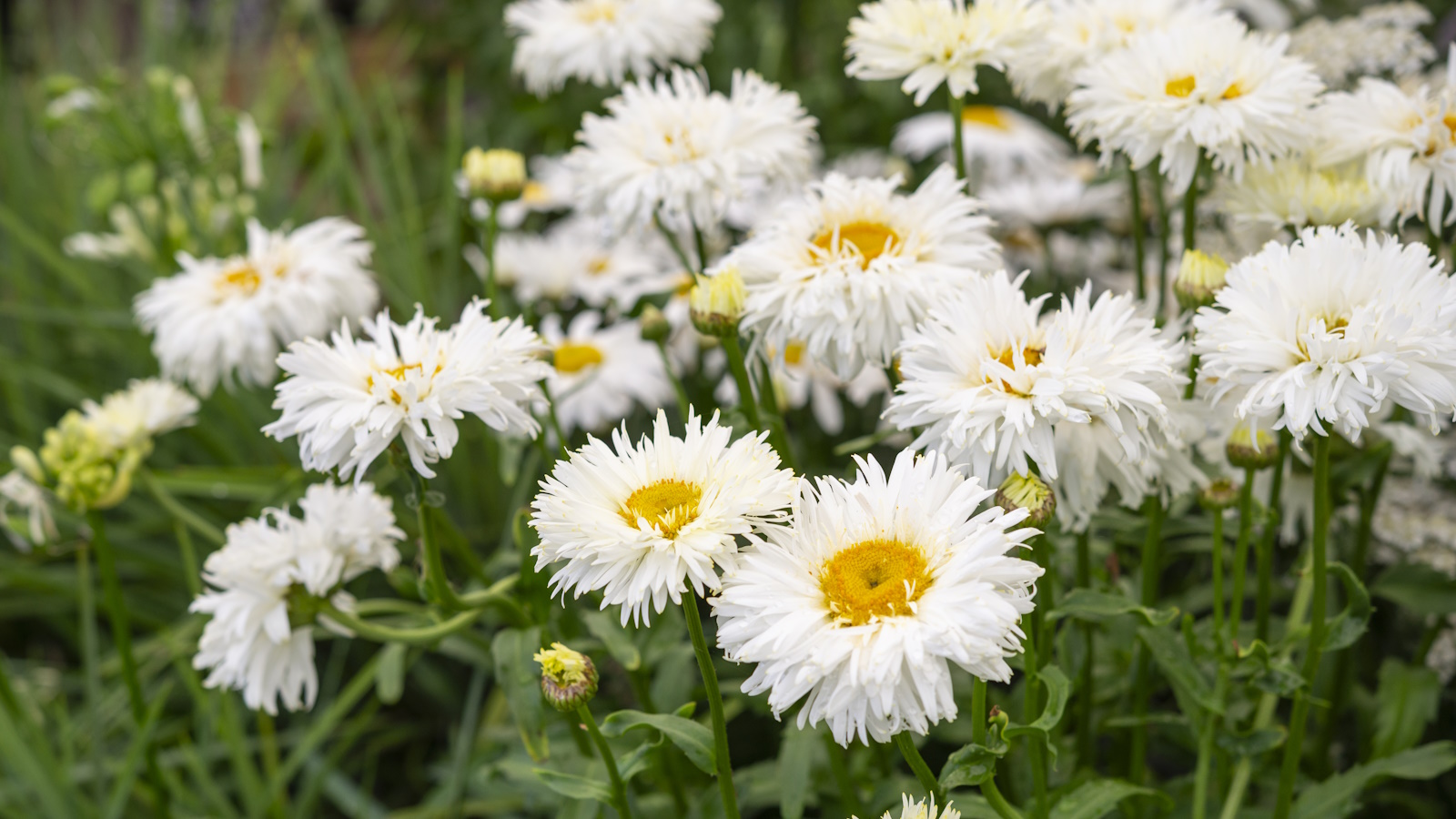
The evolution of Shasta daisies, Leucanthemum, began with the American pioneer of plant breeding, Luther Burbank. Said to have introduced about 800 different new plant varieties, including the first thornless blackberry, he worked for many years developing these large-flowered, golden-eyed white daisies and named them Shasta daisies for the snow-topped peak of northern California’s Mount Shasta.
Burbank introduced his first Shasta daisy in 1901 and, since then, more and more varieties have been developed on both sides of the Atlantic, and the best offered to American gardeners.
Now, not only are there single flowered varieties of these tough, zone 3-5 hardy perennials with flowers like huge lawn daisies, but double forms, shaggy and frilly forms, anemone-centered varieties and some with creamy, or even bright yellow petals are now available. Here, we profile 10 of the very best Shasta daisies.
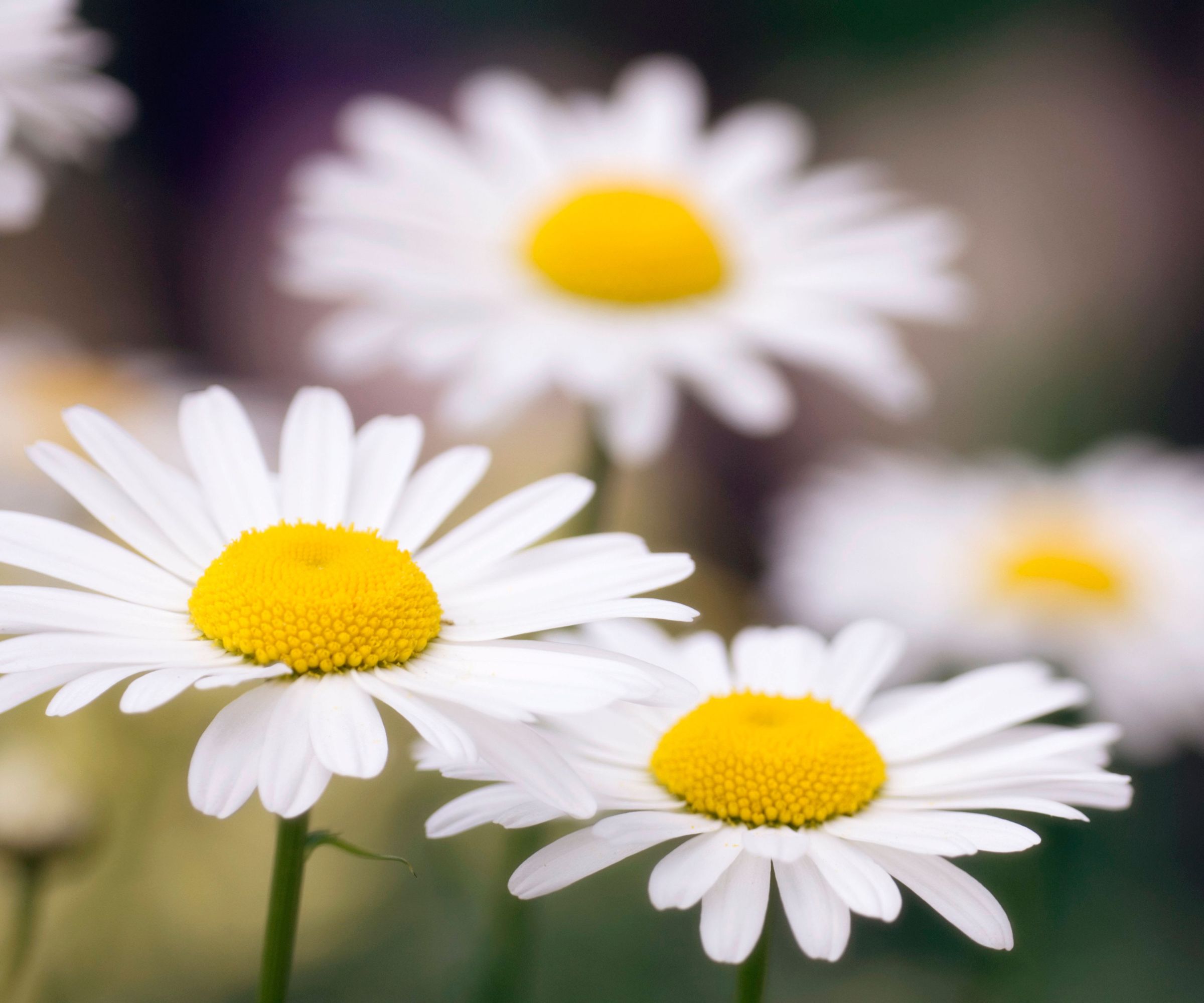
10 of the best Shasta daisies for your yard
These are robust plants that carry unusually dark leaves to set off the flowers beautifully. The upright stems branch towards the tips to create a succession of opening daisies that look right up and, if cut back when the final flowers fade, new flowering shoots will often emerge from the base. Their eventual spread depends on how often plants are divided and replanted.
Situation: Full sun or partial shade in any good soil that does not dry out in summer or stand wet in winter. The shortest varieties are good in large containers.
Care: Deadhead regularly to encourage a succession of flowers, cut back hard when the first flush of flowers has faded.
Making more: Most varieties can be lifted, divided and the healthiest pieces replanted in spring. Some can be grown from seed, and may flower in their first year.
Deer resistant? Occasionally severely damaged, generally resistant.
Hardiness: Hardiness varies between USDA zone 3 and zone 5.
A good range of Shasta daisies is available from Nature Hills.
There is also a wide range of Shasta daisies is also available from Walmart.
Alaska
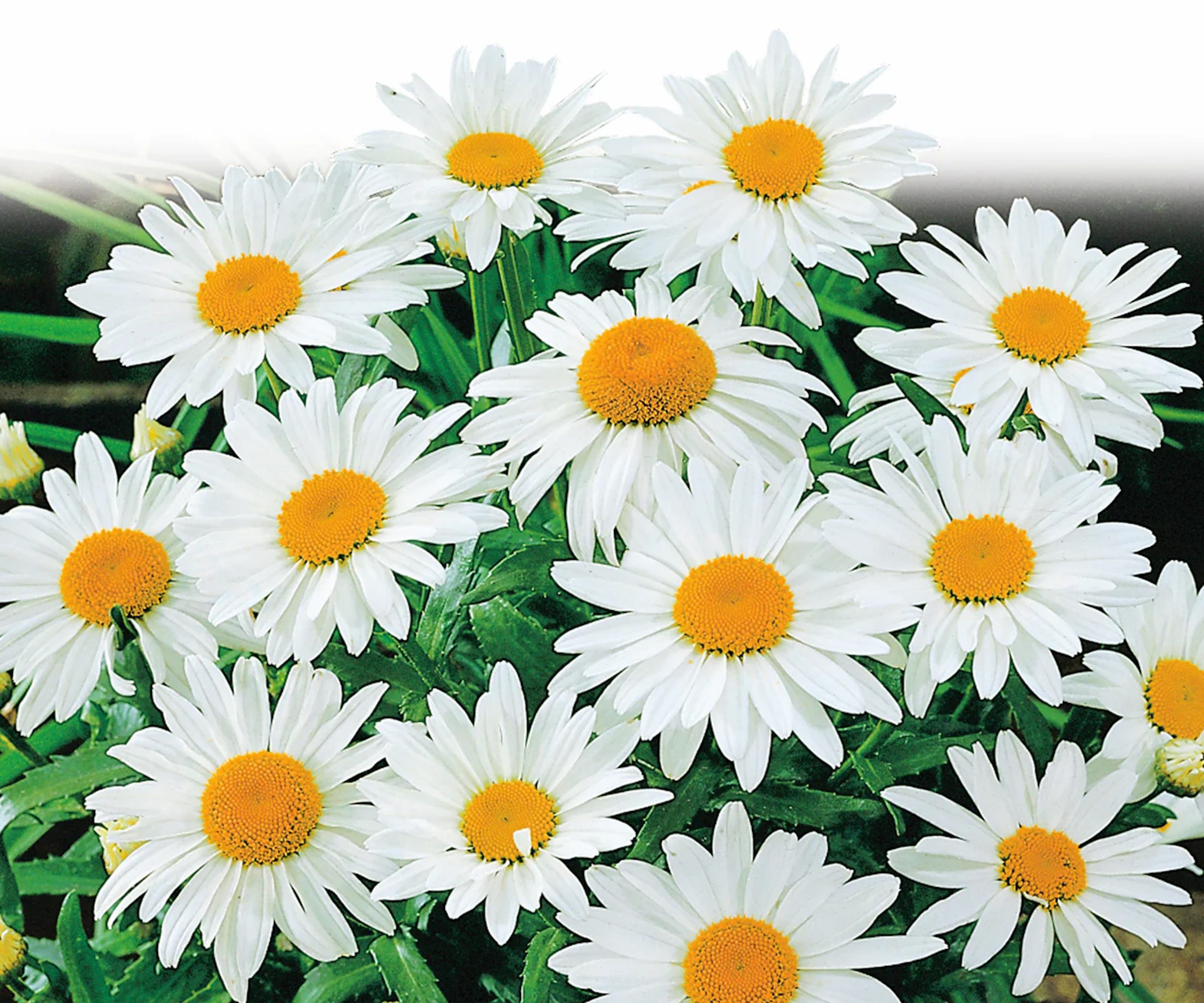
Large white daisies up to 3in cross open on medium-height plants from early summer to early fall, nicely set off by narrow, dark green leaves and stems.
The stems are relatively unbranched, making this variety especially useful for cutting, but one individual plant can be in flower for three months, especially if deadheaded promptly. This is also one of the hardiest varieties, so is ideal in zones 3 and 4. Available as seeds and as plants.
Height: 2-3ft.
Good for: Perennial and mixed borders, cottage gardens, cutting, attracting pollinators.
Making more: Lift, divide and replant in spring, start seeds in spring.
Hardiness: USDA zone 3
Leucanthemum (Shasta daisy) ‘Alaska’ is available from Ferry Morse.
Amazing Daisies Series
A series of half a dozen varieties, all developed in Michigan, that combine bright flower power with a long season of bloom.
Look in particular for 'Banana Cream' (lemon yellow buds open to creamy white flowers); ‘Daisy May’ (classic daisy flowers, well branched to give an unusually long flowering season); 'Marshmallow' (large flowers begin semi-double, then mature to a shaggy double look), and 'Spun Silk' (very large flowers, each petal fringed at the tip). Available only as plants.
Height: 20-24in
Good for: Perennial and mixed borders, cutting.
Making more: Lift, divide and replant in spring.
Hardiness: USDA zone 5
Belgian Lace
Developing into a low mound of branched stems, the double flowers open all summer and have creamy centers and petals that are delicately fringed at the tips.
Its domed growth allows it to be planted at the front of beds and borders where other varieties would reveal their stems. I’ve also seen it grown as a specimen in a large container. Available only as plants.
Height: 24-26in
Good for: Perennial and mixed borders, one of the few Shasta daisy varieties that makes good ground cover.
Making more: Lift, divide and replant in spring.
Hardiness: USDA zone 5
Betsy
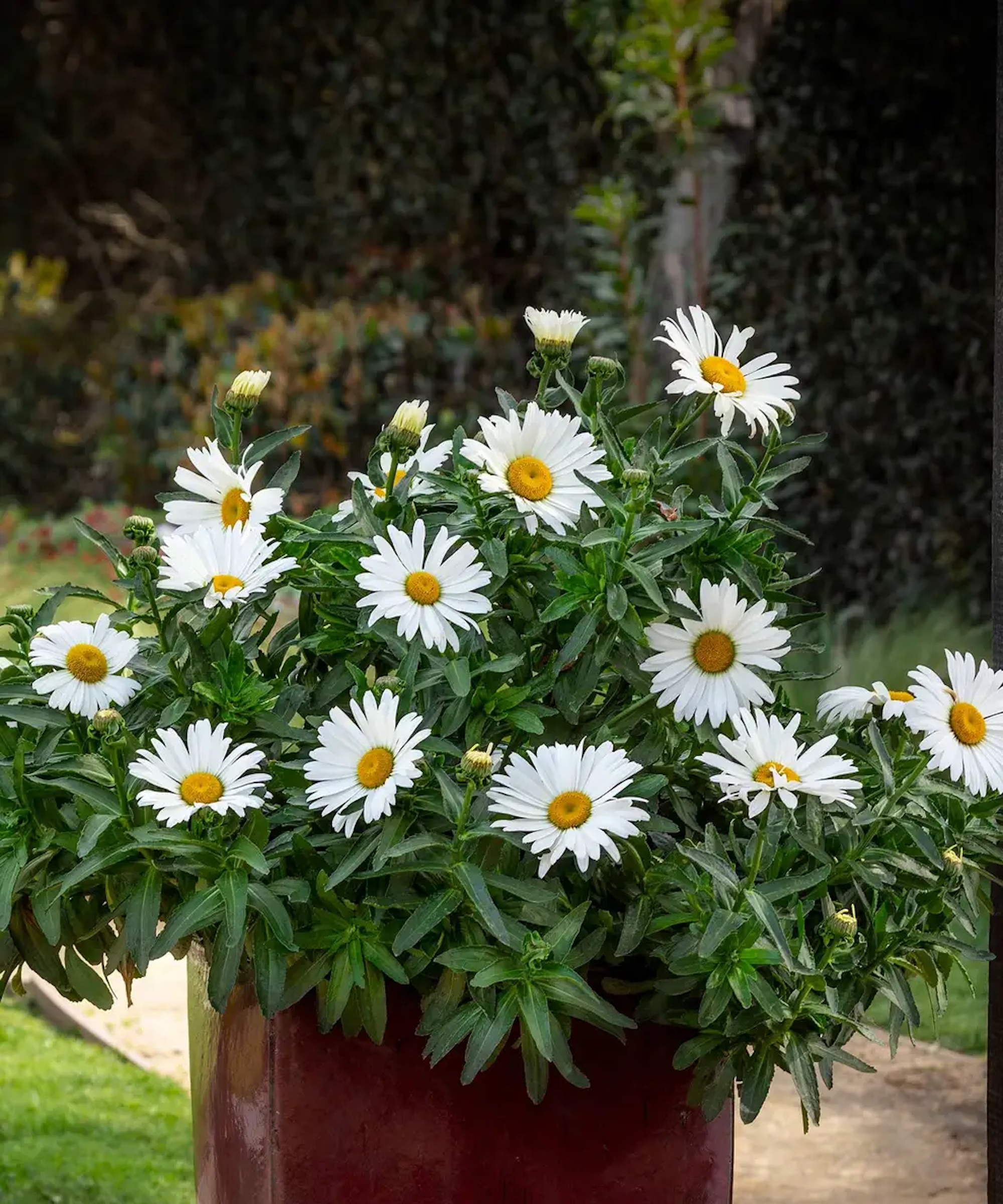
Probably the variety with the largest flowers, some sources note them as up to 7in across but 5in is more realistic. Flowers of that size really make an impact but are heavy, especially if they collect heavy rain, so thoughtful support using canes and twine or steel support frames is usually wise.
Deadheading promptly improves the look of the plant with just a few snips. Available as seeds and as plants.
Height: 18-24in
Good for: Perennial and mixed borders, cottage gardens, cutting, attracting pollinators.
Making more: Lift, divide and replant in spring, start seeds in spring.
Hardiness: USDA zone 4
Leucanthemum (Shasta daisy) ‘Betsy is available from Burpee.
Crazy Daisy
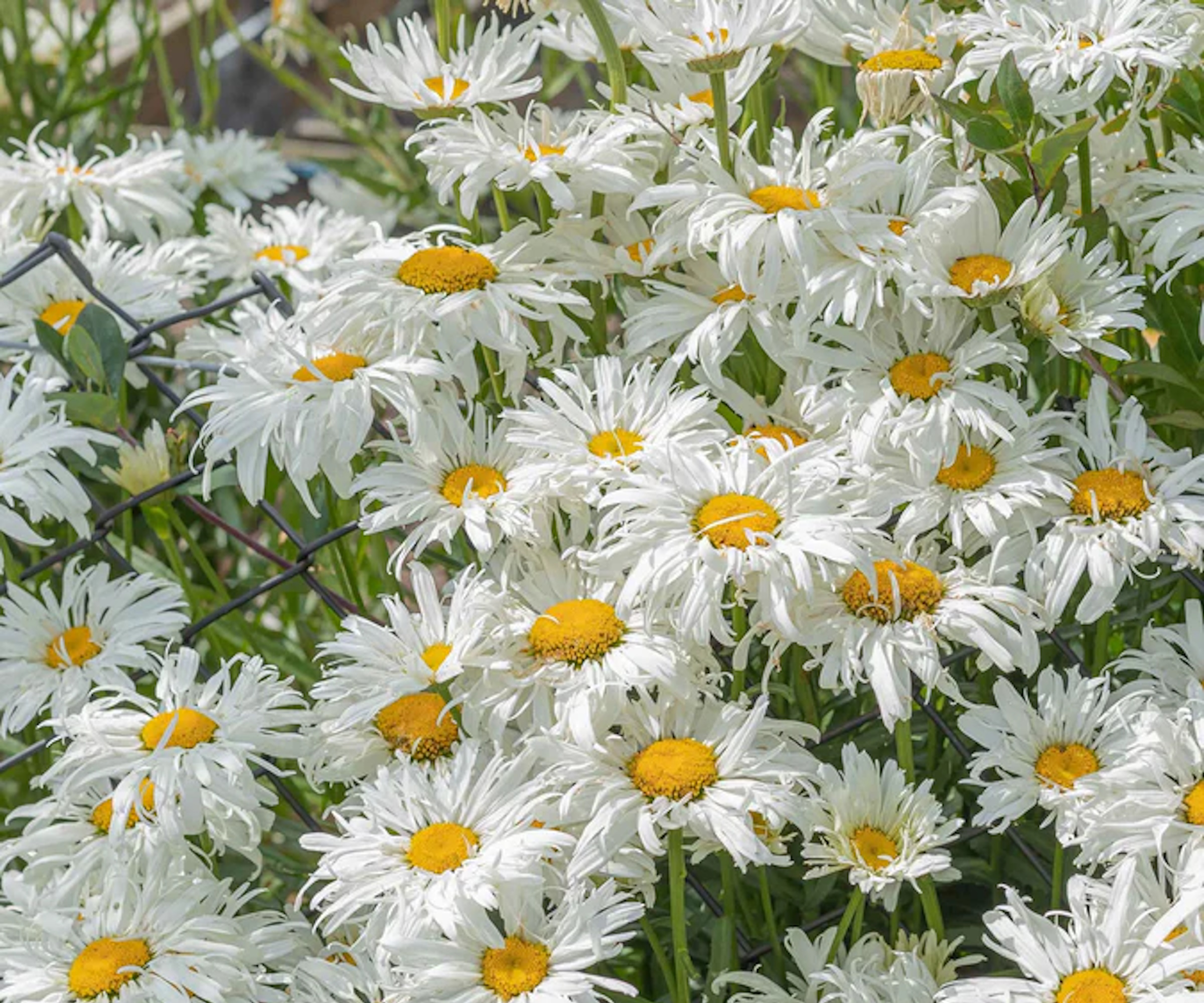
‘Crazy Daisy’ gets its name from its semi-double flowers, which are made up of a mass of slender petals, each also fringed at the tips, and sometimes twisted, to create a very distinctive slightly explosive look.
The unique shape of the flowers makes ‘Crazy Daisy’ an intriguing cut flower. Offered as seeds and as plants.
Height: 22-26in
Good for: Perennial and mixed borders, cottage gardens, cutting.
Making more: Lift, divide and replant in spring, start seeds in spring.
Hardiness: USDA zone 4
Leucanthemum (Shasta daisy) ‘Crazy Daisy’ is available from Eden Brothers.
Goldfinch
A top candidate for the Shasta daisy with the best yellow coloring, the semi-double flowers open in lemon yellow then fade gently to a slightly creamy white creating an attractive harmony of tones.
The bold golden eye adds to the look, as do the slightly frilly tips to the petals. Looks very pretty when cut and arranged with bronze foliage and with other yellow and creamy flowers. Available only as plants.
Height: 18-24in
Good for: Perennial and mixed borders, cottage gardens, cutting.
Making more: Lift, divide and replant in spring.
Hardiness: USDA zone 5
Luna
The flowers on this very distinctive variety have a rare pompom format and although a little smaller than the flowers of many varieties, they retain their yellow coloring for up to two weeks.
The flowers then mature into two-tone yellow before finally fading to white with golden tips to each petal and with a golden eye. The plants are mounded, rather than upright in growth, so the flowers almost hide the leaves. Available only as plants.
Height: 18-22in
Good for: Perennial and mixed borders, cottage gardens, pollinators, cutting.
Making more: Lift, divide and replant in spring.
Hardiness: USDA zone 5
Real Series
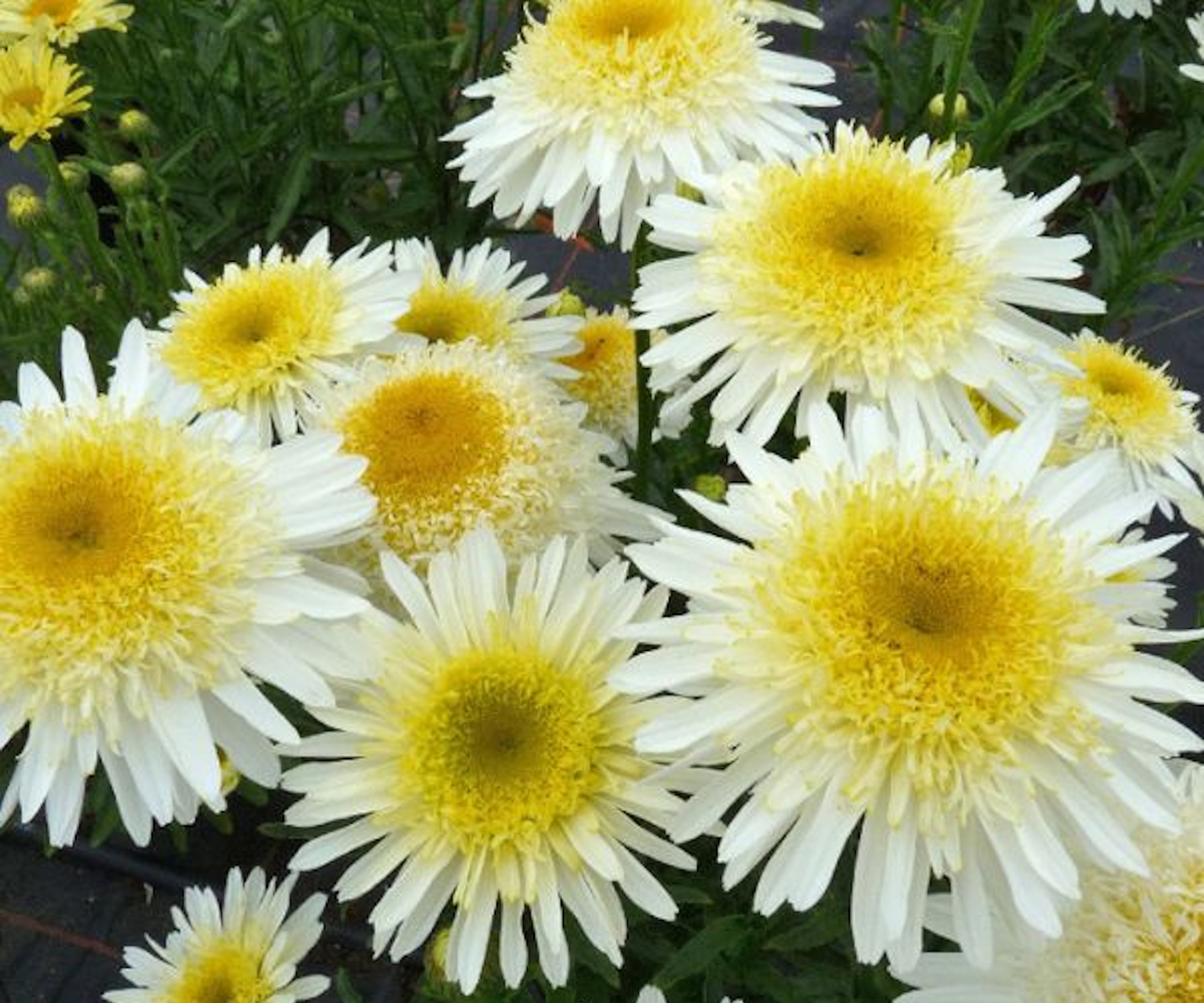
This series of 15 British bred varieties with flowers from the richest yellow to the most sparkling white come in a wide range of different flower forms.
Look out for ‘Real Glory’ (semi-double anemone-centered, with frilly fringed white petals. 36in); ‘Real Goldcup (exceptionally long lasting yellow flowers. 36in); ‘Real Neat’ (very distinctive, with each white petal rolled into a trumpet. 16in), and ‘Real Winner’ (prettily frilly, pure white petals. 24in) but all are good. Available only as plants.
Height: 16-36 in (depending on variety).
Good for: Perennial and mixed borders, cottage gardens, and cutting. The shorter varieties are good for containers, single-flowered varieties are also attract many pollinators.
Making more: Lift, divide and replant in spring.
Hardiness: USDA zone 5
Leucanthemum (Shasta daisy) ‘Breal Glory’ is available from Nature Hills.
Snow Lady
Developed specifically to be started from seeds, ‘Snow Lady’ develops quickly from sowing in early spring and will often open its golden-eyed white flowers in its first year.
Set against neat, dark foliage the flowers are shown off brightly. In the plants’ second season the flowers will open on taller, mounded plants that retain their dome shape but on larger plants. Available as seeds, and as plants.
Height: 9-12in (first year), 15-18in (following years).
Good for: The front of perennial and mixed borders, rock gardens, containers, edging and good for pollinators.
Making more: Start from seeds, or lift, divide and replant in spring.
Hardiness: USDA zone 4
Victorian Secret
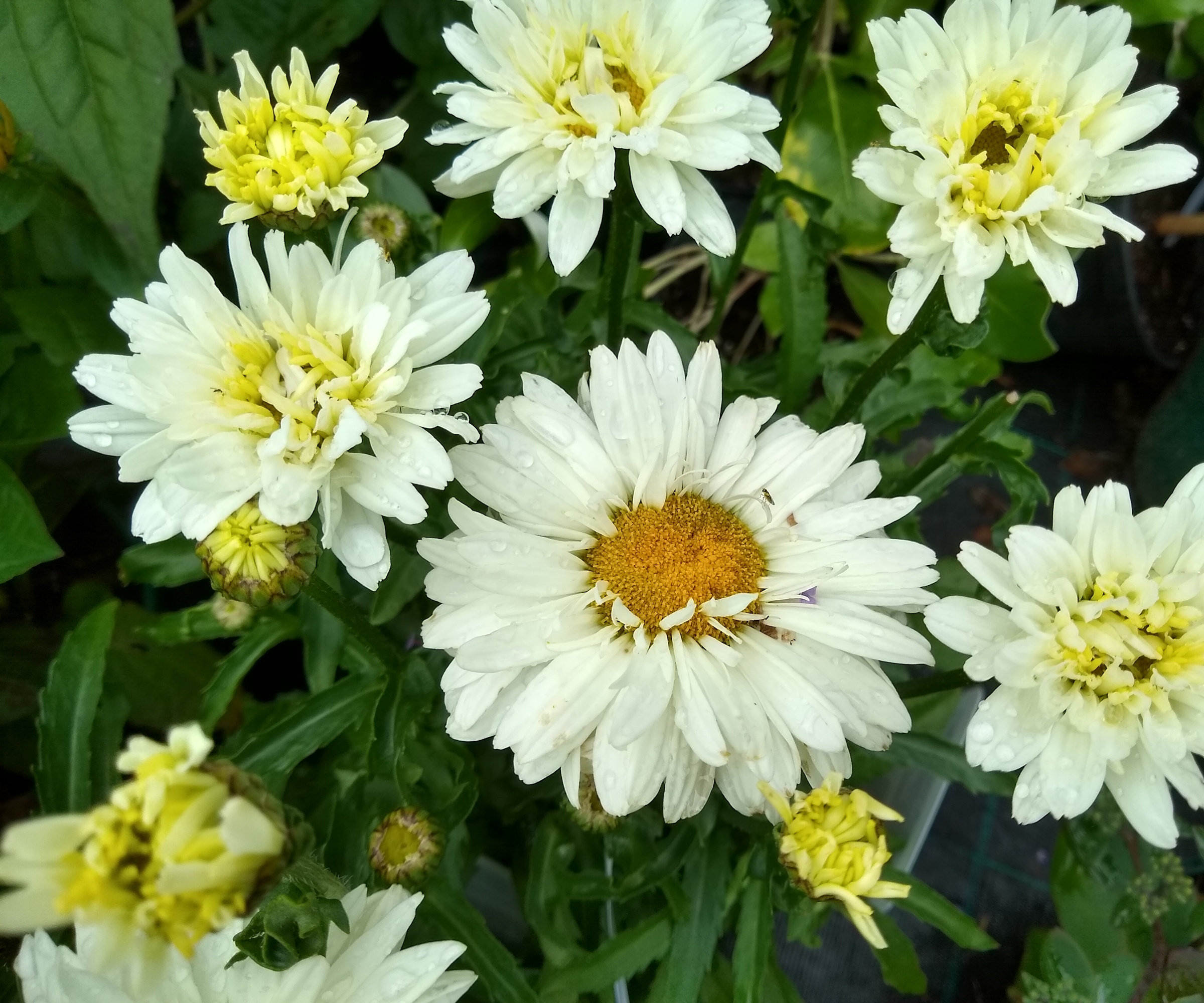
Neat-growing plants are covered with the familiar golden-eyed white summer flowers. But, in ‘Victorian Secret’, the petals on each flower are not all held at quite the same angle and this gives each bloom a very pretty informal, rather ruffled look. The plants are shorter than many, so are good in containers. Available only as plants.
Height: 15-18in
Good for: Perennial and mixed borders, containers, and good for pollinators.
Making more: Lift, divide and replant in spring.
Hardiness: USDA zone 4
If you already have other hardy perennials growing in your beds and borders, fall is the perfect time to lift and divide them to create new plants to fill gaps in other arts of your yard. Find out other perennials to divide in September in our handy, seasonal guide.







